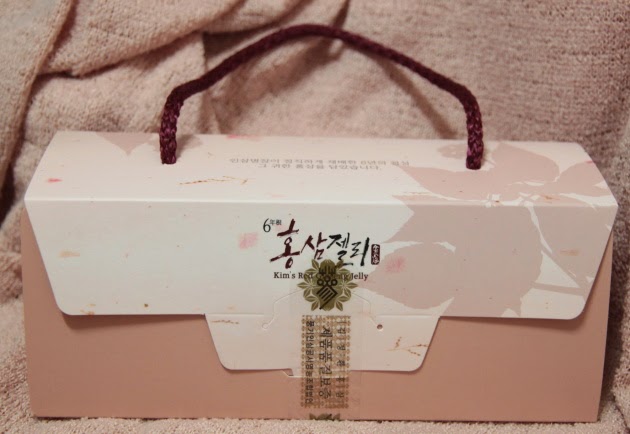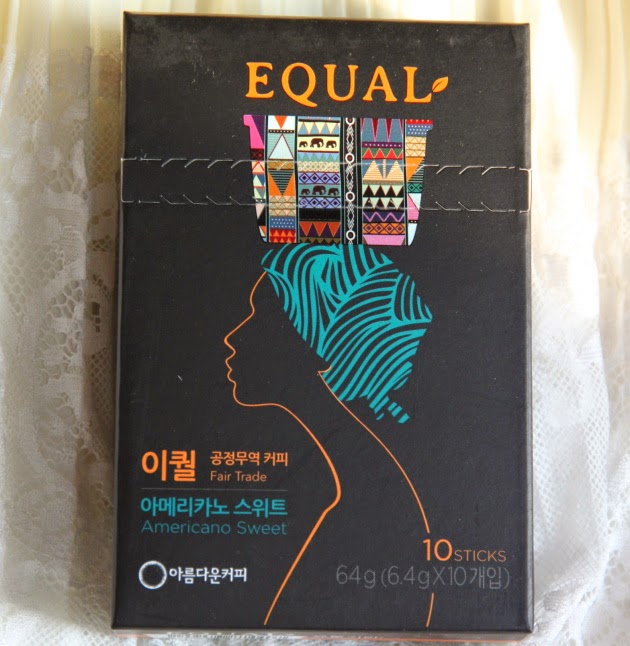Sweet potato ice cream - one of my favorite flavors ever. The ice cream is wrapped in waffle and there is a sweet layer on one side that tastes like caramelized sweet potato purée. Yum
Green tea ice cream is my all-time favorite flavor. This one is from Paris Baguette and costs around 1 500 KRW. It is rather watery, but it's not bad.
Macaron ice cream is a rather expensive thing - rarely are they sold for less than 3 500 KRW. This one is also from Paris Baguette and it is very very good. They have two or three flavors (blueberry, chocolate and mango). It tastes muuuuch better than the one that can be bought from various stalls as a street snack, and it is a little cheaper, too.
Sweet potato bread and red bean bread. When I stay in lab overnight, I treat myself to a nice breakfast - usually sweet bread from Paris Baguette. The sweet potato bread is quite nice (at least if you love sweet potatoes as much as I do) and red bean bread is the IT bread in Korea. If you've seen Kim Tak Gu, you know what I'm talking about. It's not as nice as home-made one, but it's not bad either. Just make sure you don't take the one which has red bean + cream filling, that is a little eww.
Once, I saw this Mickey mouse cake in Paris Baguette - for 1 800 KRW for a tiny cake, I got it purely because it was cute. The taste was OK, but the texture was very dense and not nice at all.
Osulloc is the brand of tea that is worth bringing from Korea as a gift or souvenir. It is hella expensive, but the packaging is beautiful and it tastes delicious. If you don't have 30 E to spend on 50 g of tea, I suggest you take advantage of the individual tea bags being sold for 1 500 KRW/piece. It is still pricey, but you get to try more flavors and also, you can use the tea bag three times, which makes one cup a more affordable 0.5 E.
They also have a little more affordable line of less nicely packed tea bags, which is available in some supermarkets and drugstores like LOHB for something between 5 and 10 000 KRW.
This is what I was talking about when I said odd plant part tea - in Korea, the most common tea is made (at least partially) from roasted grains or from plants and their parts that we don't commonly use in Europe. They are very popular, but honestly, they all taste the same to me, and the taste is not particularly delicious. The ume flower tea tastes nothing like plum. My Korean friend claims that the burdock tea is good to make your body feel warmer in winter, but it doesn't work on me. TT___TT At least the Chamomile tea from E Mart is quite normal.
I'm not sure if it is a new product or if E Mart just started importing more flavors, but Heladiv now has several new flavors. I was planning to get strawberry black tea, but I took cherry black tea by mistake. Compared to my delicious experience with banana flavored tea in summer, this one is very disappointing. The flavor tastes really fake.
My favorite Lotte popcorn ever (on the photo right below) now has a new flavor - butter and consomme. I was curious if the savory version is as delicious as the sweet one, but it is not. Korean savory snacks are rarely salty - usually, they are kind of savory sweet, or more sweet than savory. It is the case with this popcorn, too. It tastes like chicken soup in which you put sugar instead of salt by mistake.
Daiso snacks - Mango marshamallows (which I finished off before taking the photo) tasted very fake, but strawberry pocky in ultra cute retro packaging for 1 000 KRW? Yes please!
Lotte department store has a nice import snack section. It is usually expensive, but promotions happen, so you can buy rather affordable snacks from Europe and Japan. This green tea KitKat was not on sale and was rather expensive for 7 000 KRW/pack, but still, it is green tea kitkat afterall. I just can't help it, I love green tea chocolate more than any other snack. This actually inspired Anette and me to make our own, with white chocolate and matcha powder. It's much cheaper!
Another import snack I had to get was ramune - my favorite non-chocolate candy. 3 000 KRW were a decent price to pay for my ultimate guilty pleasure.
Oragnic supermarkets are becoming increasingly popular in Korea. Not that I'm thrilled by the idea of buying overpriced food that is often not even organic, but sometimes they have interesting products. So I decided to try this ginseng jelly candy in gorgeous gift packaging for mere 5 000 KRW - which is a good indicator that the ginseng extract comprises a minuscule portion of this treat. It is edible - I quite like ginseng tea, but this candy doesn't taste as nice.
If you go to Jeju, there are some snacks that are a must-buy. The most important thing to get are dried tangerines, oranges, mandarines or other citruses. Fully dried or semi-dried, coated in chocolate or not, these are amazing snacks that are harder to buy in other parts of Korea. They are orgasmic and should not cost over 10 000 or 12 000 KRW per box.
Chocolate with Jeju green tea, oranges or cactus are a popular souvenir too, but they can be bought easily outside of Jeju, though in Jeju, the traditional markets sell them cheaply - 6 boxes for 10 000 KRW, and you'll get freebies too - just check all the assorted chocolate we got for buying things for about 35 000 KRW. They are not as delicious and unique as the dried citrus though.
Lastly, Jeju pork jerky is a great gift for your male friends and relatives, or other meat-eaters who don't have a sweet tooth. Double pack costs about 20 000 KRW.
This pumpkin snack from Daiso is probably the weirdest snack I've tried in Korea. It has a bland taste and horrible spongey yet chewy texture.If you eat it, grill it first - tastes much better.
Red bean jelly and red bean/other ingredient (such as sweet potato) jelly are snacks I really like. They feel kinda healthier than other snacks, and while I prefer the Japanese version a little more, I stil buy the Korean one whenever the price is good.
Milk is expensive in Korea. That doesn't come as a surprise, since dairy is not really big in Asia. But what is worse, soy milk and other plant-based milk substitutes are even more expensive. I was lucky though, and I scored 3 of them at 50% off!
First, Mango soy milk from Vegemil. It is absolutely delicious! My mum normally hates soy products, but she liked this milk too. There are pieces of mango jelly inside and it is very refreshing. It normally costs 20 000 KRW for less than 3 L, but I got it on promo for 10 000 - which is still expensive, but so worth the awesome taste!
Second, Almond chocolate milk had damaged box, so I snatched it for less than 5 000 KRW for a bit under 3 L. It tastes like liquid pralines and ever since I tried it, I've been checking the plant milk section constantly for more damaged boxes - no luck as of yet.
Third, an expensive Maeil soy milk for kids was also 50% off due to damaged box - I thought if I'm going to try this, this is the time, for 10 000 instead of the usual 20. It was a big waste of money though, because it tasted much worse than the cheaper soy milks. I do drink and eat a lot of soy products, but this one was only edible for me whne I mixed it in fruit smoothies - and I still felt like I spoilt the fruit.
Instant noodles are a staple in the diet of time and money-poor Korean university students. Thankfully, the offer is really large, so it's possible to keep somewhat "varied" diet. In Beautiful store, I found noodles made from potatoes. The soup was quite nice.
E Mart's private label, Peacock, has very tasty looking cereals - whole grain muesli - for around 5 000 KRW/430 g. They are surprisingly not overpacked (i.e., there is reasonable space between the plastic bag and the cardboard box, not 1 L of air), the packaging looks cute, the taste is good and there are all the promised ingredients in reasonable proportion.
Kellogg's blueberry flakes are more of a sweet snack than breakfast cereals, but they are really delicious. I'm not sure if you'd really loose weight eating these (unless you kep the minuscule portion recommendation - 40 g), but they are a nice snack.
My labmates told me that while Maxim is good for basic coffee mix, special ones like cappuccino or latte are better bought from Nescafe. After trying the Maxim cappuccino in vanilla flavor, I must say they are probably right - it doesn't taste particularly nice, though it is less horrible than cheaper brands.
Beautiful store sells a lot of fair trade products. While I do not think organic produce is neccessarrily better, I try to buy fair trade as often as I can, since people should always be paid enough money to live well. This Equal americano comes in unsweetened and sweetened versions and costs around 7 or 8 000 KRW per pack of 10 sticks. I bought the sweet version and I find it quite delicious, and it is still cheaper than buying Americano from the coffee shops.
However, the Equal hot chocolate mix might be fairtrade, but it is the most disgusting cocoa I've drank. It has very chalky texture and strange off taste.
To move on to some interesting fruits and veg, what I find quite strange is that winter and early spring are the season of strawberries. They were rather pricey until February, but in March, a kilo could go as low as 3 to 5 000 KRW in the small neighborhood shops, traditional markets and from truck drivers.
Another winter fruit in Korea are citruses. The most notable one is hallabong, which tastes like something between what we call orange and mandarine in Europe. They are crazy expensive outside Jeju, but worth trying if you are in Korea, as they are a speciality from Jeju and hard to buy in other parts of the world. 1.5 kg costs between 5 and 20 000 KRW depending on the quality and place where you buy them (supermarkets and locations outside of Jeju are more expensive).
And the last winter specialty I tried were dried persimmons. I was surprised to find out they are the same price or more expensive than buying them pre-packed in Europe in Asian supermarkets. 10 pieces cost something between 5 and 10 000 KRW in the traditional market, I think - the prices vary a lot based on the place and the persimmons and the kind of drying.
Yours truly
Vita
























































Omg I adore this type of post, I didn't try much food from the convenience stores when I was in Seoul as I couldn't really tell what things were. This is so interesting!
ReplyDelete{ sparklesideup.com }
Oh my God so many delicious sweets
ReplyDeletexx
www.sakuranko.com
waow!!! evrything looks and sounds yummy!!!!!! the green tea chocolate seems so good!!!! and I love the name Paris Baguette! thanks for these discoveries!
ReplyDeletexxx
Ahhhhh to mi nedělej! !!!! Ted me taaaak honi mlsná..eeeee snedla vych vše co jsi vyfotila
ReplyDelete